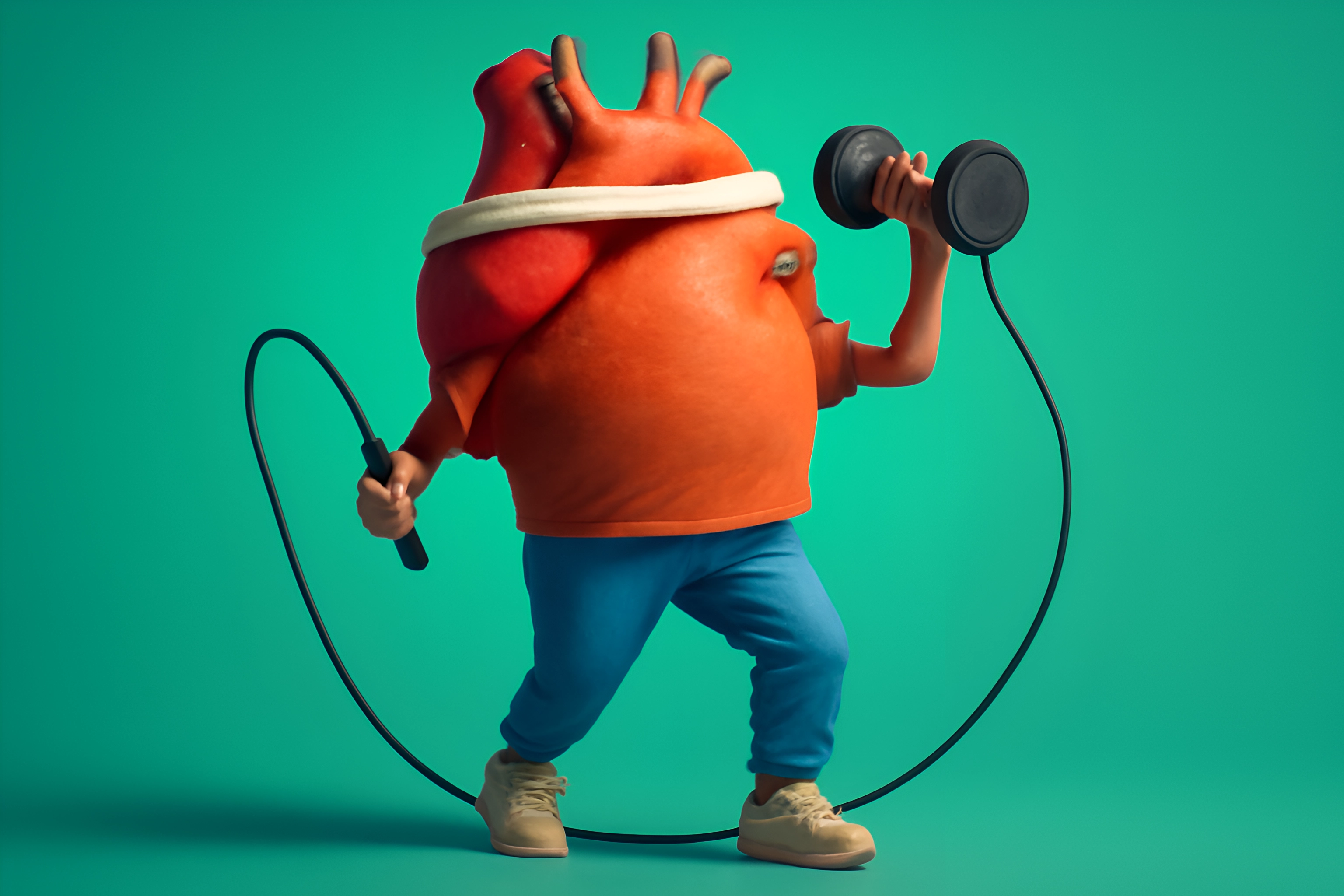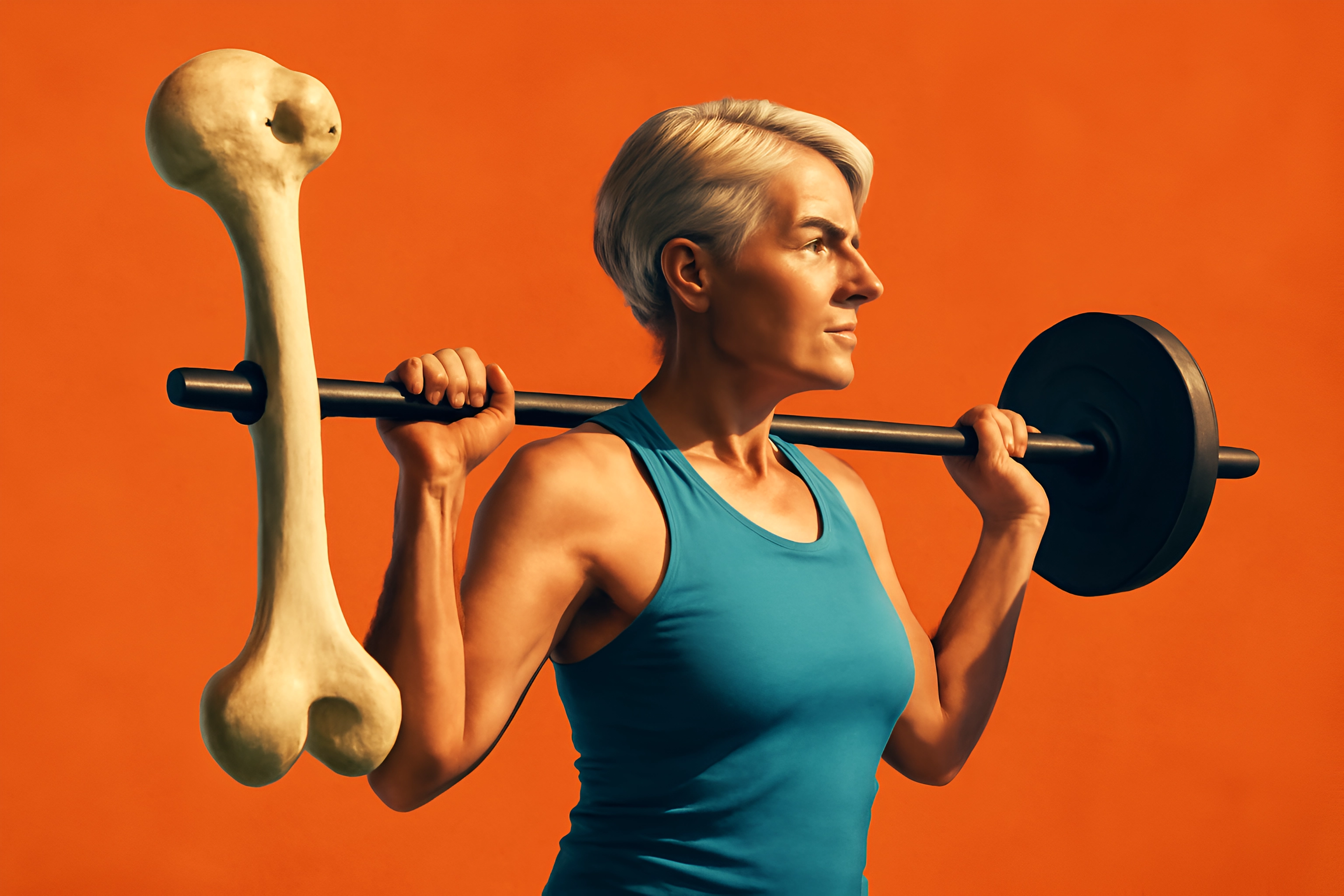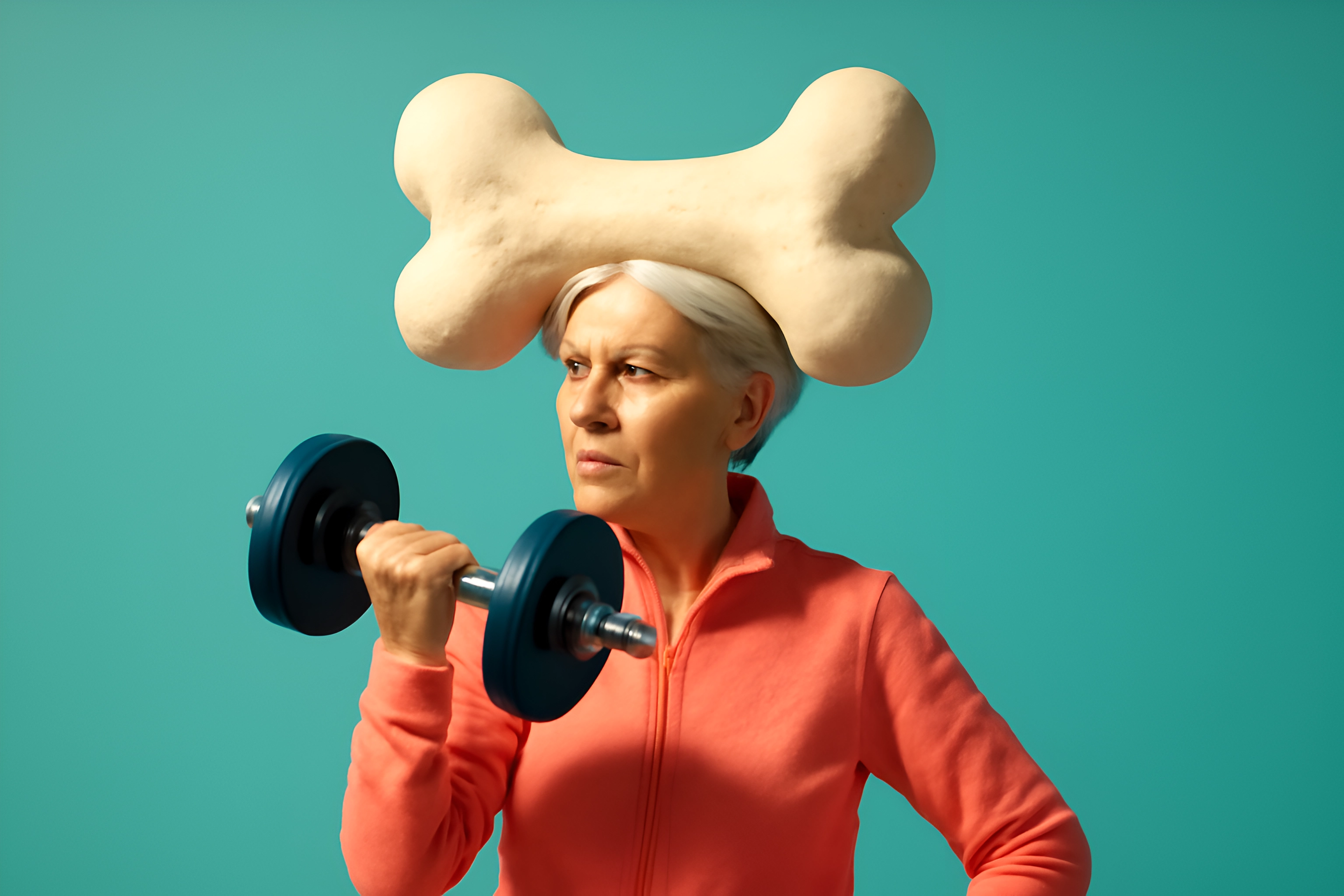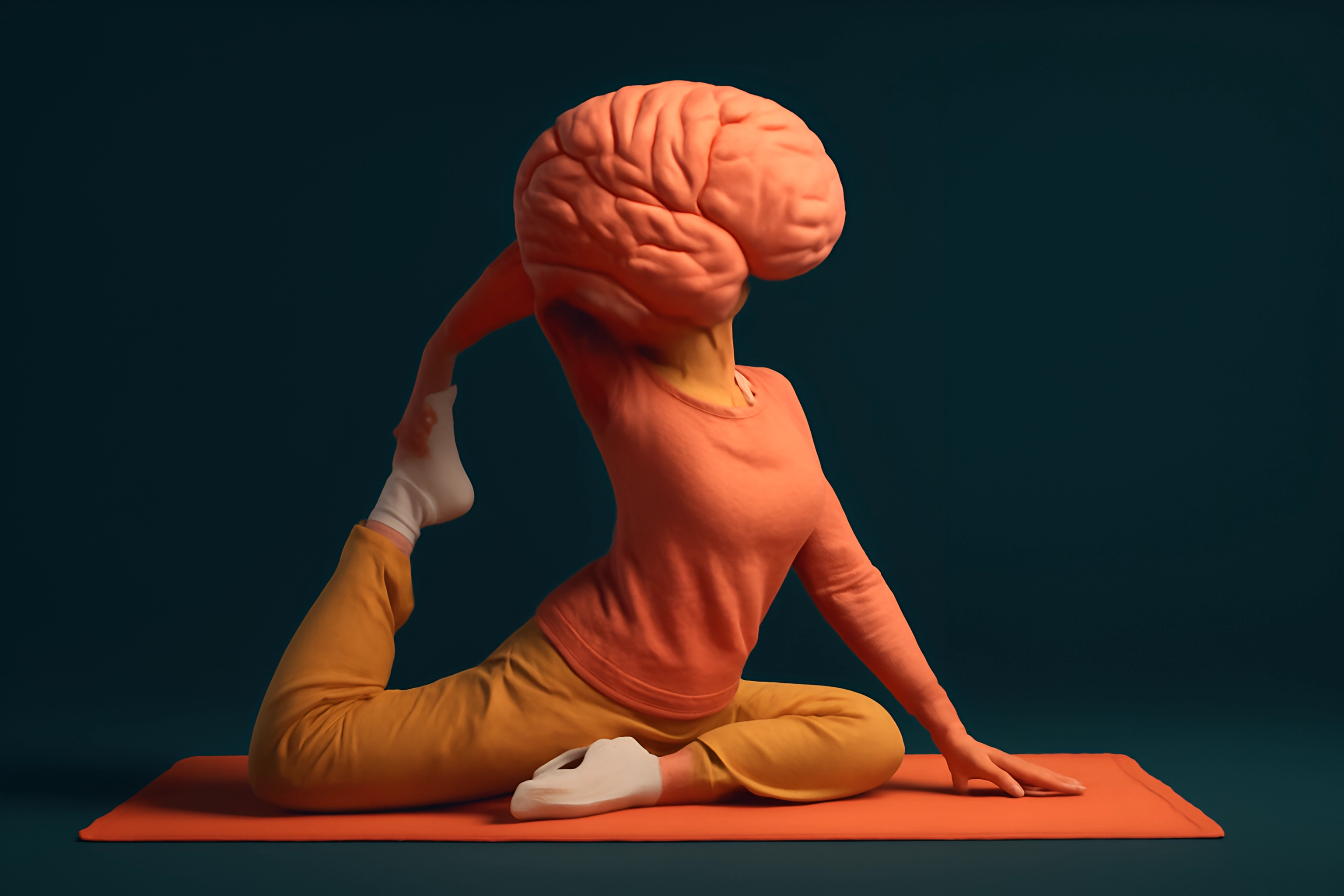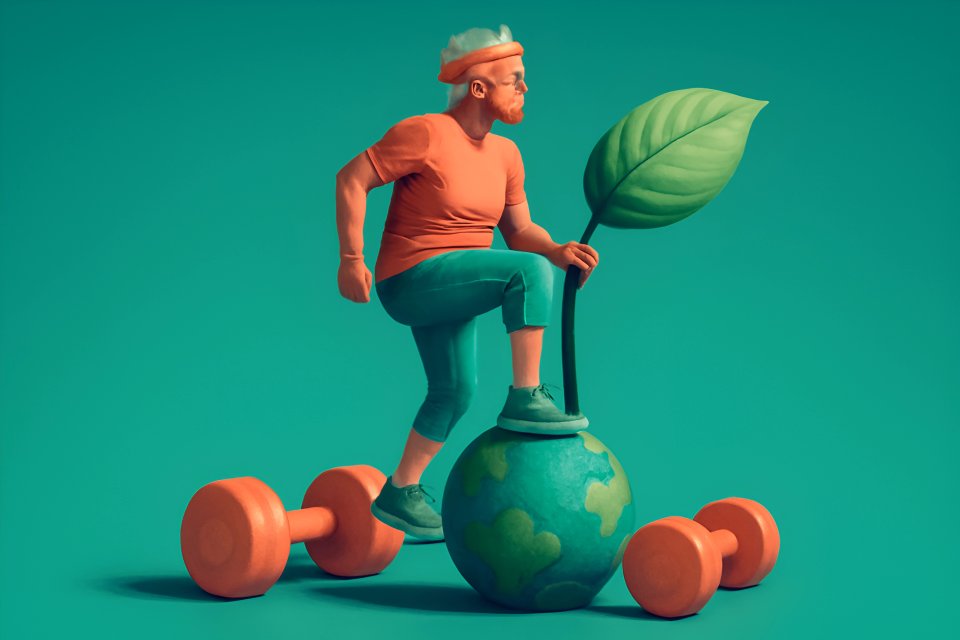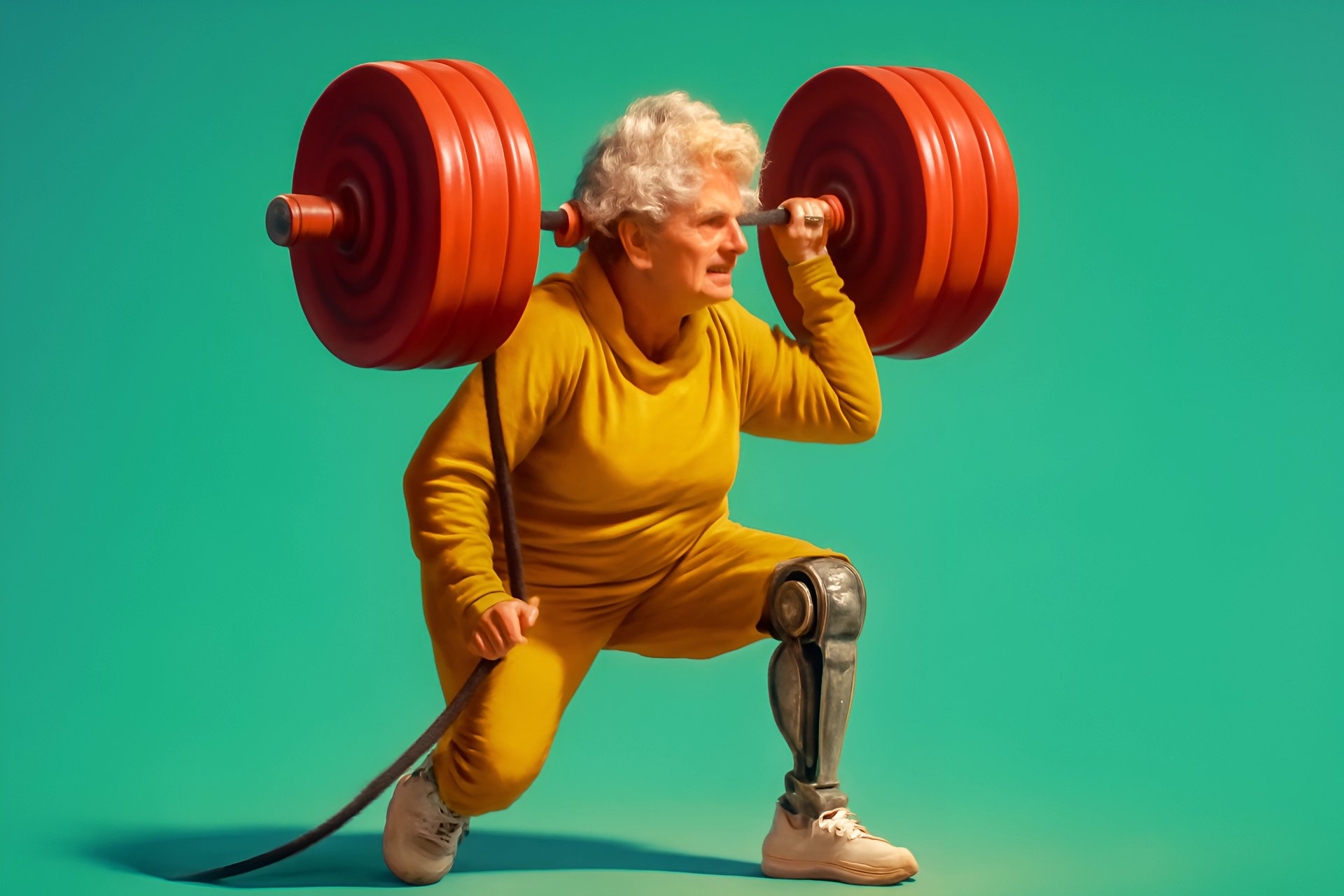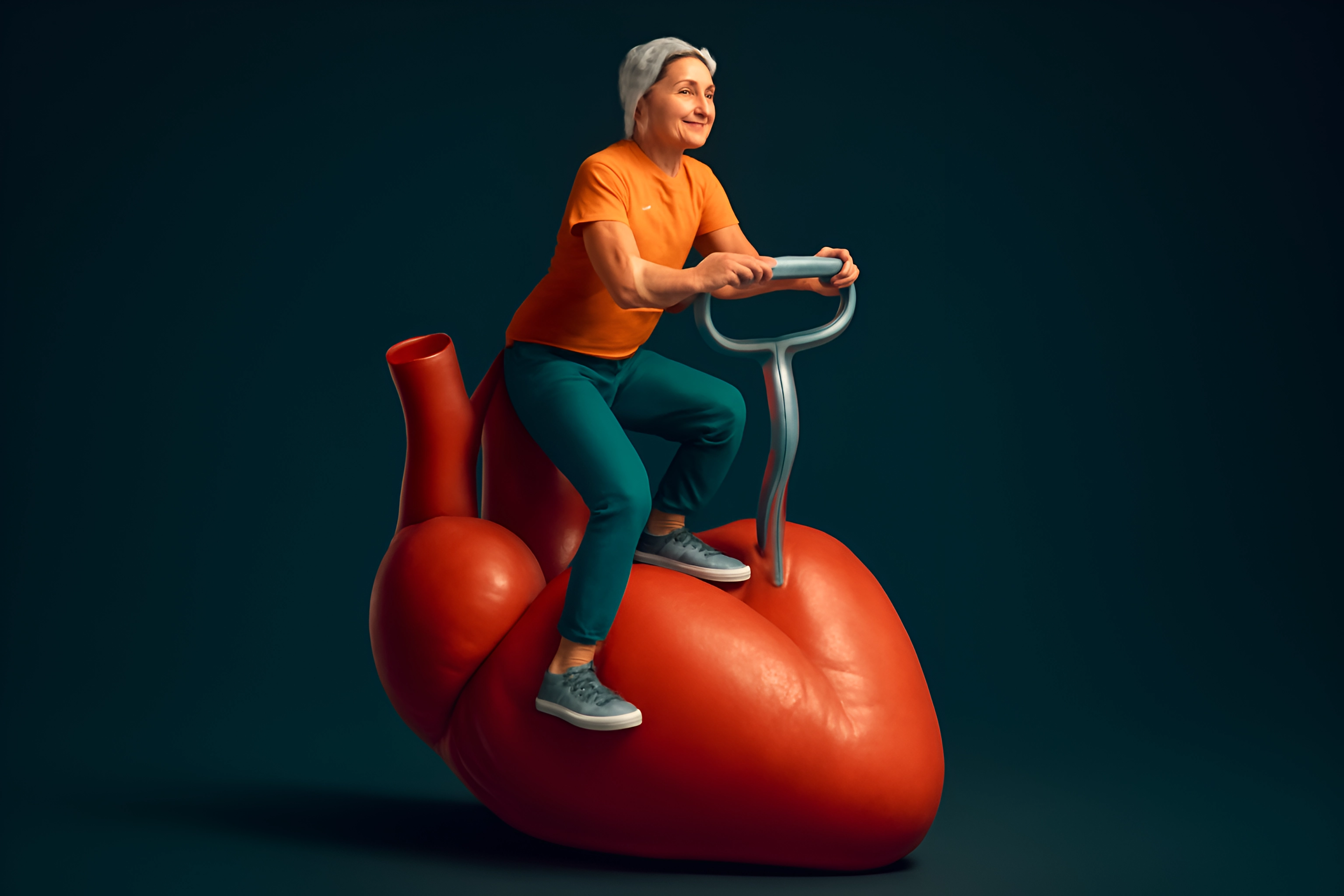
Feeling that spark, that desire to keep your body moving and your heart strong, especially as the years gracefully add up? It’s a powerful urge, isn't it? But maybe, just maybe, the thought of high-impact exercise brings a little wince, a memory of creaky joints, or the fear that one wrong move could set you back. Perhaps you've wondered if "no pain, no gain" is the only path to a healthy heart.
Well, I'm Deborah Lane, and here at FitOverFifty, we believe in smart, sustainable fitness that celebrates your body, not punishes it. That's why I'm thrilled to talk about a game-changer: low-impact cardio. This isn't about slowing down; it's about getting stronger, healthier, and more vibrant, all while being kind to your joints. In this post, we'll explore a variety of fantastic low-impact cardio exercises for 50+ individuals, uncover the incredible benefits they offer, share crucial safety tips, and guide you on how to weave these activities into your life seamlessly.
Forget the jarring jumps and pounding pavements of yesteryear. It's absolutely possible—and wonderfully enjoyable—to get a fantastic cardio workout that supports your heart, boosts your energy, and keeps you feeling your best. Let's discover how you can embrace heart healthy cardio for seniors and feel amazing doing it!
The Powerful Benefits of Gentle Cardio for Your Heart and Joints
Why all the buzz about low-impact cardio, especially when you're navigating fitness after fifty? It’s simple: the rewards are immense, touching everything from your heart's rhythm to your daily spring in your step. This isn't just about avoiding discomfort; it's about actively choosing a path that nurtures your body for the long haul.
First and foremost, let's talk about your heart. Gentle, consistent cardio is like a love song for your cardiovascular system. According to the American Heart Association's recommendations for physical activity, engaging in activities like these strengthens your heart muscle, making it more efficient at pumping blood. This improved circulation can lead to better management of blood pressure and cholesterol levels, two critical factors in maintaining heart healthy cardio for seniors. Imagine your arteries becoming more flexible, your blood flowing more freely – that’s the power of low-impact movement.
Then there's the incredible gift of joint protection. If you've ever felt a twinge in your knees or a stiffness in your hips after a workout, you'll appreciate this. Low-impact exercises, by their very nature, minimize the stress on your joints – your knees, hips, ankles, and back will thank you. For instance, Harvard Medical School highlights the advantages of water-based exercise, where buoyancy can reduce joint loading by as much as 75-90%. This makes joint-friendly exercise routines not just a preference, but a smart strategy for pain-free activity and reducing the risk of injury, allowing you to stay active for years to come.
But the benefits don't stop there! Consistent low-impact cardio is a fantastic way to build stamina and boost your overall energy levels. Think about having more get-up-and-go for your daily tasks, hobbies, and time with loved ones. It also plays a significant role in weight management; as the CDC's guidelines for older adults suggest, activities like brisk walking can help burn calories effectively. And let's not forget the mental uplift – the endorphin release from exercise is a natural mood booster, helping to reduce stress and anxiety. It’s a holistic approach to feeling fantastic, inside and out.
Setting Yourself Up for Success: Safety First!
Embarking on a new fitness journey, or even just tweaking your current one, is exciting! But before you jump in with both feet, let’s talk about laying a solid, safe foundation. A little preparation goes a long way in ensuring your low-impact cardio experience is positive, effective, and injury-free.
The golden rule, always, is to have a chat with your doctor before starting any new exercise program. This is especially important if you have any pre-existing health conditions. As the Mayo Clinic advises on exercise safety, your doctor can offer personalized guidance and ensure your chosen activities are a good fit for you, helping you to avoid any potential pitfalls.
Once you have the green light, remember the dynamic duo: warm-ups and cool-downs. A proper warm-up, think 5-10 minutes of light movement like arm circles or leg swings, prepares your muscles and joints for action. It gradually increases your heart rate and blood flow, and as research suggests, can elevate core temperature by 1-2°C, enhancing synovial fluid viscosity for smoother joint movement. Similarly, cool-downs are not to be skipped! Spending 5-10 minutes on slower movements and static stretches helps your heart rate return to normal gradually and can prevent dizziness. Plus, a good cool-down can reduce delayed-onset muscle soreness by as much as 25%.
Finally, listen to your body – it’s your best guide. There's a difference between the satisfying fatigue of a good workout and the sharp signal of pain. Aim for "no pain, all gain (sensibly!)." If something doesn't feel right, especially in your joints, ease off or modify the movement. And don't underestimate the power of proper gear! Supportive footwear is crucial; shoes with good cushioning can reduce ground reaction forces during activities like walking by around 20%. Comfortable, breathable clothing will also make your workouts much more enjoyable.
Our Favorite Joint-Friendly Cardio Workouts to Get You Moving
Ready to explore some fantastic ways to get your heart pumping without putting undue stress on your joints? The world of low-impact cardio is wonderfully diverse, offering something for almost everyone. Let's dive into some of our top picks, perfect for the 50+ crowd looking to boost their fitness and feel great.
Brisk Walking
Why it's great for 50+
Brisk walking is the unsung hero of accessible fitness. It's free, you can do it almost anywhere, and it's incredibly effective for cardiovascular health with minimal impact. An AARP survey on walking habits found that 45% of adults over 50 engage in leisure walking, highlighting its popularity and accessibility.
How to do it
Focus on good posture: stand tall, engage your core slightly, and let your shoulders relax. Swing your arms naturally from your shoulders, not your elbows, to help propel you forward. Aim for a pace where you can still hold a conversation but feel your heart rate elevate – the CDC suggests a pace of about 100 steps per minute to reach moderate intensity.
Modifications & Tips for Safety/Progression
Beginners can start with shorter distances or a slower pace, gradually increasing as fitness improves. For added stability and an upper-body workout, consider using Nordic walking poles; they can engage up to 90% of your upper-body muscles. To increase the challenge, incorporate small hills or vary your speed with intervals. Always wear supportive shoes and choose safe, well-lit paths.
Equipment needed
Good walking shoes. Optional: walking poles.
Swimming or Water Aerobics
Why it's great for 50+
Water is your friend! Swimming and water aerobics offer a virtually no-impact, full-body workout that's exceptionally kind to joints, making it a fantastic choice if you experience arthritis. The buoyancy of water supports your body, reducing stress on your joints significantly, while the water itself provides gentle resistance.
How to do it
For swimming, basic strokes like freestyle, breaststroke, or backstroke are all excellent. Focus on smooth, controlled movements and rhythmic breathing. For water aerobics, you might do activities like water walking (forward, backward, sideways), leg lifts, arm curls with water weights (or just using the water's resistance), and gentle jumping jacks. Many community pools offer classes specifically designed for seniors.
Modifications & Tips for Safety/Progression
If you're new to swimming or not a strong swimmer, start in the shallow end where you can comfortably stand. Use a flotation device like a kickboard or noodle for support if needed. Focus on your form rather than speed initially. For water aerobics, listen to the instructor and modify movements as needed – for example, march in place instead of jumping if that feels better. The Arthritis Foundation's Aquatic Program often includes exercises like lateral leg lifts, which can improve hip strength.
Equipment needed
Swimsuit. Optional: goggles, swim cap, flotation devices, water weights.
Cycling (Stationary or Outdoor)
Why it's great for 50+
Cycling, whether on a stationary bike at home or the gym, or outdoors on a traditional or e-bike, is a wonderfully smooth, non-jarring way to get your heart rate up and build lower body strength. It’s particularly good for those who find walking puts too much pressure on their knees or hips. An AARP cycling survey even found that 23% of older adults use e-bikes, which can help overcome stamina declines.
How to do it
Proper bike setup is key, especially for seat height – your knee should be slightly bent at the bottom of the pedal stroke. Maintain a steady cadence (pedaling speed) that feels challenging but sustainable. If outdoors, choose routes with minimal traffic and smooth surfaces.
Modifications & Tips for Safety/Progression
A recumbent bike, where you sit in a reclined position with back support, can be an excellent option if you have back issues, as it can reduce lumbar spine pressure by about 40% compared to upright bikes, according to insights on exercise for hip or knee pain. Start with low resistance or flat terrain and shorter durations, gradually increasing as you get fitter. If cycling outdoors, always wear a helmet and bright clothing.
Equipment needed
Bicycle (stationary, outdoor, or e-bike). Helmet (for outdoor).
Elliptical Trainer
Why it's great for 50+
The elliptical trainer is a gym favorite for a reason. It mimics the motion of walking, jogging, or climbing stairs but without the impact, making it very joint-friendly. Many models also have moving arm handles, allowing for a good upper-body and core workout simultaneously.
How to do it
Place your feet squarely on the pedals. If using the arm handles, coordinate your arm movements with your leg movements – typically opposite arm to leg. Maintain good posture: stand tall, engage your core, and avoid leaning too heavily on the handles (if you're not using them for an arm workout).
Modifications & Tips for Safety/Progression
Start with no incline and low resistance. Focus on smooth, controlled movements. You can begin with shorter sessions, say 10-15 minutes, and gradually increase the duration and resistance as your stamina improves. Some people prefer not to use the arm handles initially to focus on balance and leg movement.
Equipment needed
Elliptical trainer (usually found in gyms or available for home purchase).
Rowing Machine (Ergometer)
Why it's great for 50+
Don't be intimidated by the rowing machine! It offers a fantastic full-body, low-impact workout that builds both strength and cardiovascular endurance. It engages your legs, core, and upper body in a coordinated effort.
How to do it
Proper form is crucial to get the benefits and avoid strain. The rowing stroke has four phases:
- Catch: Legs compressed, arms reaching forward, back straight.
- Drive: Push powerfully with your legs first, then lean back slightly with your core, and finally pull the handle towards your lower chest with your arms.
- Finish: Legs extended, slight lean back, handle at lower chest.
- Recovery: Extend arms, lean forward from the hips, then bend knees to slide forward.
It's often described as "legs, core, arms" on the drive, and "arms, core, legs" on the recovery. Many resources, like those from Concept2, a popular rower manufacturer, offer excellent form tutorials.
Modifications & Tips for Safety/Progression
Start with a low damper setting (which controls airflow and thus resistance). Focus intently on mastering the form for short intervals before trying to row for longer periods or at higher intensities. Watch videos and consider asking a trainer for a form check if you're at a gym.
Equipment needed
Rowing machine (ergometer).
Low-Impact Aerobics or Dance Fitness
Why it's great for 50+
Who says exercise can't be a party? Low-impact aerobics and dance fitness classes, like Zumba Gold or gentle dance routines, are incredibly fun, engaging, and great for improving coordination and cardiovascular health. The social aspect of group classes can also be a huge motivator; Zumba's own blog highlights how Zumba Gold can increase adherence to exercise.
How to do it
Typically, you'll follow an instructor, either in an in-person class or via an online video. The key is to choose "low-impact" versions where movements are modified to avoid jumps, jarring motions, or overly complex choreography that might challenge balance.
Modifications & Tips for Safety/Progression
Listen to your body and the instructor's cues for modifications. For example, you can march in place instead of doing wide steps or grapevines. Keep arm movements smaller if needed, and avoid quick turns if balance is a concern. The goal is to keep moving safely and enjoy the rhythm!
Equipment needed
Comfortable clothes, supportive shoes. Sometimes light hand weights are used, but often it's just bodyweight.
Tai Chi
Why it's great for 50+
While often seen as a mind-body practice, Tai Chi can certainly elevate your heart rate, especially more active forms, and its benefits for balance, stress reduction, and gentle strength are undeniable. It involves slow, flowing, and controlled movements, making it exceptionally low impact. Research funded by the National Institute on Aging found that an enhanced version of Tai Chi even improved cognitive scores in older adults.
How to do it
Tai Chi is best learned from a qualified instructor to grasp the nuances of the forms and postures. It emphasizes deep breathing synchronized with slow, deliberate movements. The focus is on weight shifting, coordination, and maintaining a calm, focused mind.
Modifications & Tips for Safety/Progression
Many Tai Chi forms can be adapted to be done while seated if standing for long periods is difficult. Start with simpler, shorter forms and gradually progress as you become more comfortable and your balance improves. The gentle nature of Tai Chi makes it suitable for almost any fitness level.
Equipment needed
Comfortable, loose-fitting clothing. Usually performed barefoot or in flat, flexible shoes.
Making Low-Impact Cardio a Sustainable Part of Your Life
You've explored the options, maybe even felt a spark of excitement for one or two (or more!). Now, how do you weave these wonderful easy cardio workouts over fifty into the fabric of your daily life so they stick? It's all about creating a routine that feels good, is achievable, and, most importantly, sustainable.
So, how often should you aim to get moving? The American Heart Association recommends at least 150 minutes of moderate-intensity aerobic activity per week for adults. The great news is you don't have to do this all at once! You can break it down into manageable chunks – perhaps 30 minutes five days a week, or even shorter 10-15 minute bursts throughout the day if that suits you better. When you're just starting, even 10-15 minutes per session is a fantastic beginning, and you can gradually increase the duration as your stamina builds.
What about intensity? You don't need to push yourself to exhaustion. A good rule of thumb is the "talk test." During moderate-intensity activity, you should be able to talk, but not sing. You'll feel your breathing and heart rate are noticeably elevated, but you're not gasping for air. This perceived exertion is a reliable way to ensure you're working hard enough to reap the benefits without overdoing it. Remember, consistency is king. Regular, moderate effort is far more beneficial in the long run than sporadic, overly intense bursts that might lead to burnout or injury.
And to truly make it last, keep things interesting! Variety can be the spice of your fitness life. Try different activities from the list above to work different muscles and prevent boredom. Create an uplifting playlist, invite a friend to join you for a walk or a swim – a little social connection can make exercise feel less like a chore and more like a treat. For more ideas on structuring your activities, check out our guide on how to build a low-impact exercise routine.
Fueling Your Fitness: Complementary Habits for a Healthy Heart
While these low-impact cardio exercises are powerhouses for your heart and joints, remember that they are one part of a larger, beautiful picture of well-being. To truly thrive and support your heart-healthy lifestyle, it's wonderful to nurture other complementary habits. Think of them as the supporting cast that helps your star performer – your active body – shine even brighter.
Nourishing your body with heart-healthy foods plays a pivotal role. Adopting eating patterns like the Mediterranean diet, rich in fruits, vegetables, whole grains, and healthy fats, can amplify the benefits of your exercise. In fact, combining such a diet with regular physical activity can significantly reduce triglycerides, a type of fat in your blood, by around 15%. Proper hydration is also key, especially when you're active. Drinking enough water throughout the day, and particularly during and after exercise, helps your body perform optimally and recover effectively.
Don't underestimate the power of quality sleep. It's during these restful hours that your body repairs and rejuvenates. Interestingly, the Sleep Foundation notes that moderate-intensity exercise can decrease the time it takes to fall asleep by as much as 35% in older adults. Finally, managing stress is crucial. Chronic stress can take a toll on your heart, so incorporating practices like mindfulness, meditation, or even your beloved Tai Chi can complement your physical activity beautifully, creating a holistic shield for your heart.
Embrace Your Journey to a Healthier, More Active You!
So, there you have it – a world of possibilities with low-impact cardio, designed to keep you feeling strong, energetic, and full of life, well beyond fifty! We've journeyed through the incredible ways these gentle yet powerful exercises can boost your heart health, protect your precious joints, and lift your spirits. It’s clear that you don’t need to endure high-impact strain to achieve fantastic fitness results.
At FitOverFifty, we truly believe it's never too late to invest in your health and well-being. Embracing low-impact cardio exercises for 50+ isn't just about adding years to your life, but life to your years. It’s about finding joy in movement, feeling confident in your body's abilities, and nurturing that vibrant spark within you. You have the power to choose activities that make you feel good, that respect your body, and that contribute to a healthier, happier you.
Now, I'd love to hear from you! Which of these low-impact exercises are you most excited to try first, or perhaps, which ones are already a beloved part of your routine? Share your thoughts and experiences in the comments below – let's inspire each other! And don't forget to subscribe to FitOverFifty for more tips, guidance, and encouragement on thriving in this amazing chapter of life!


